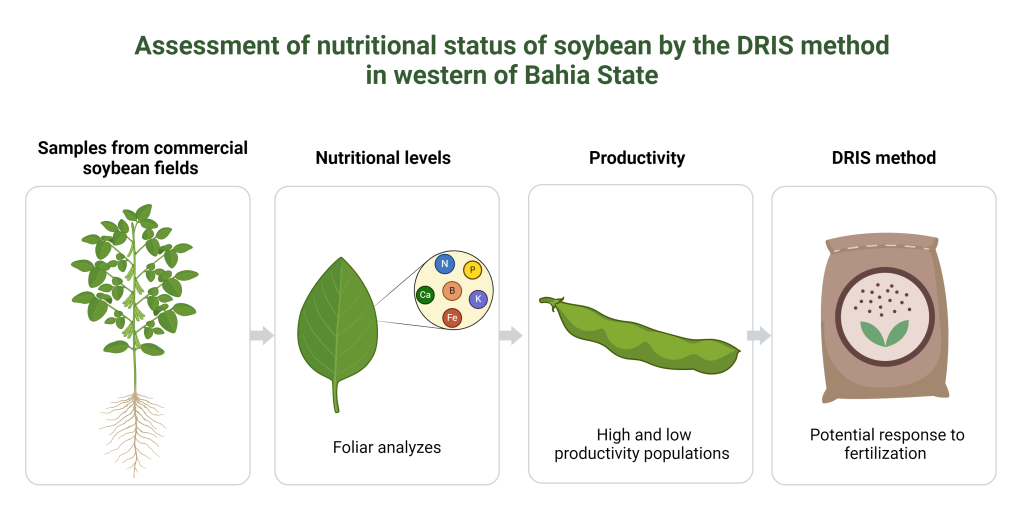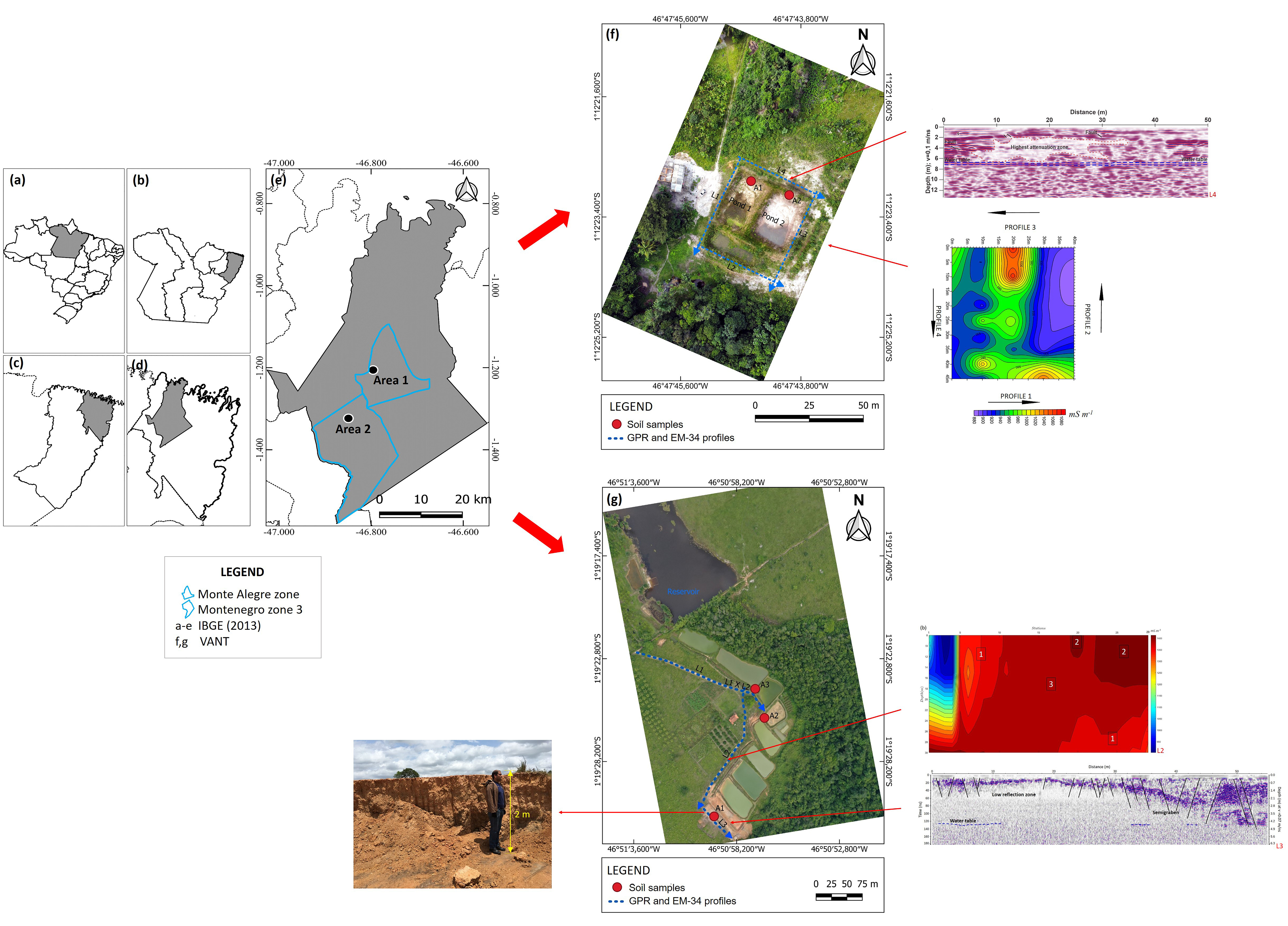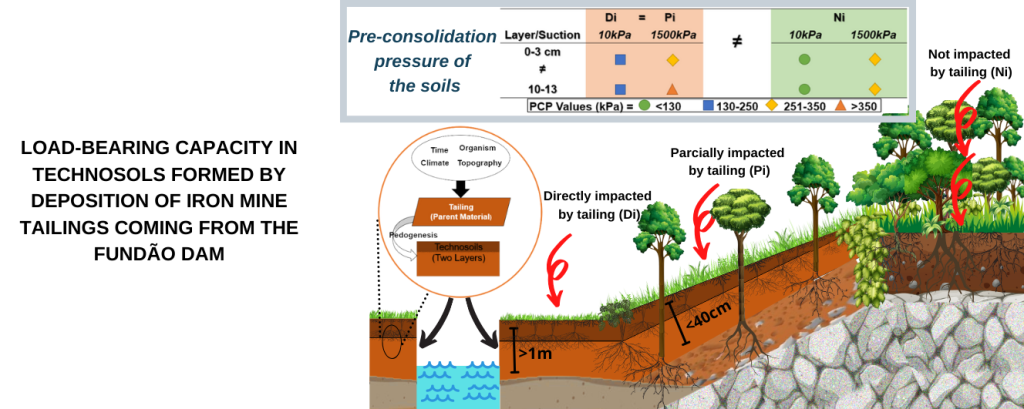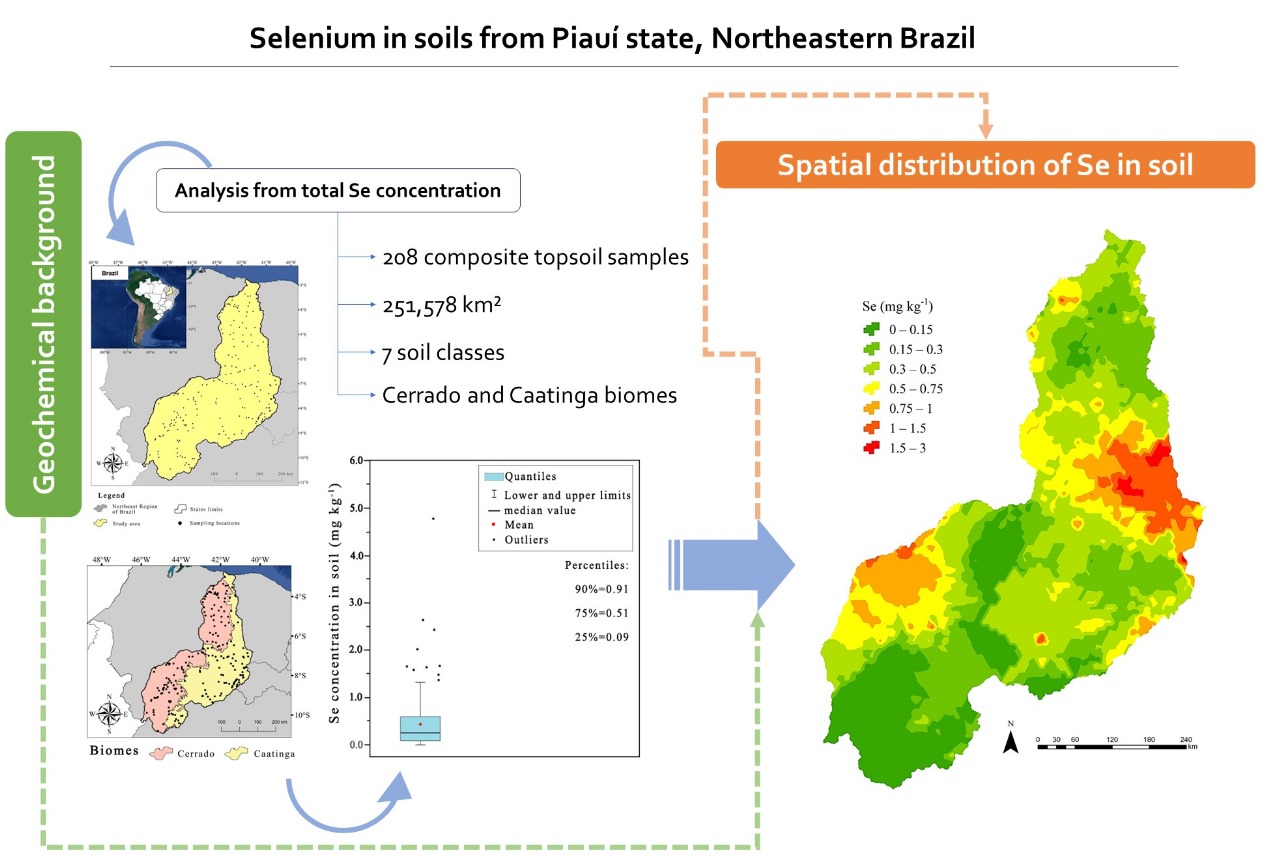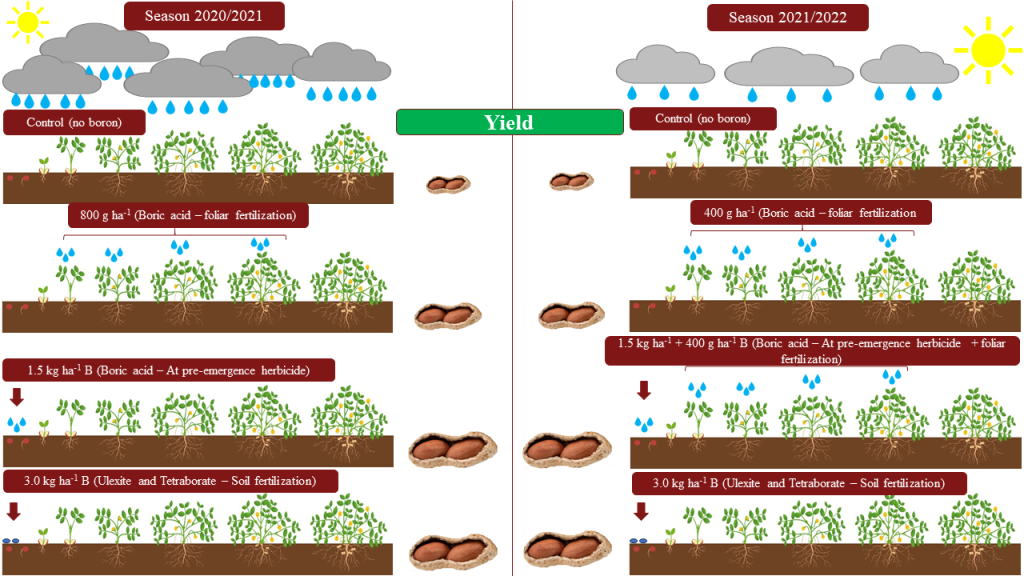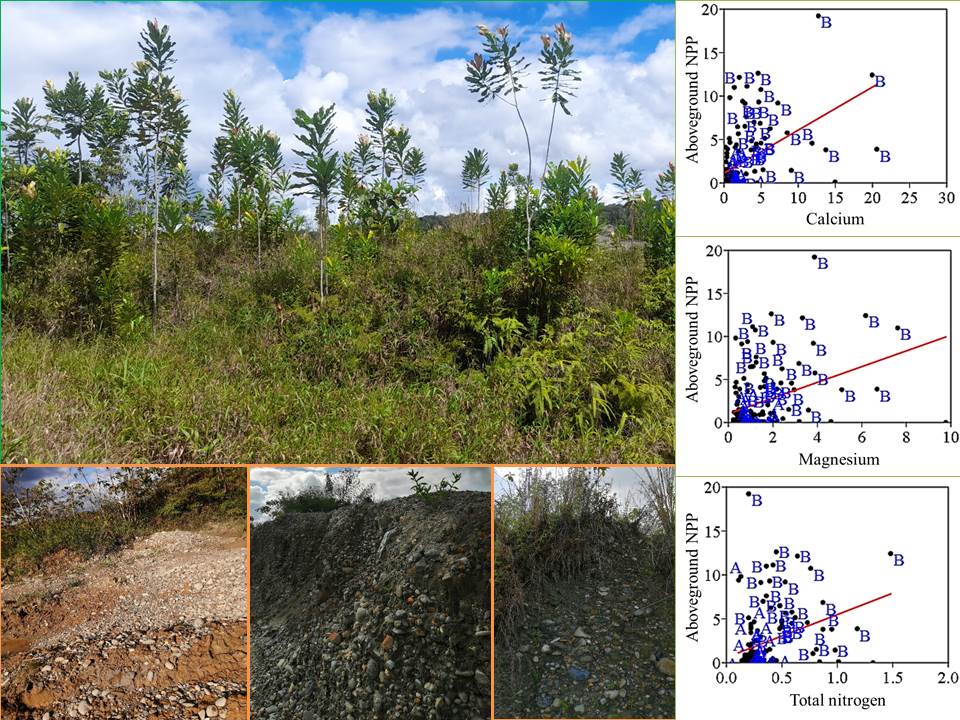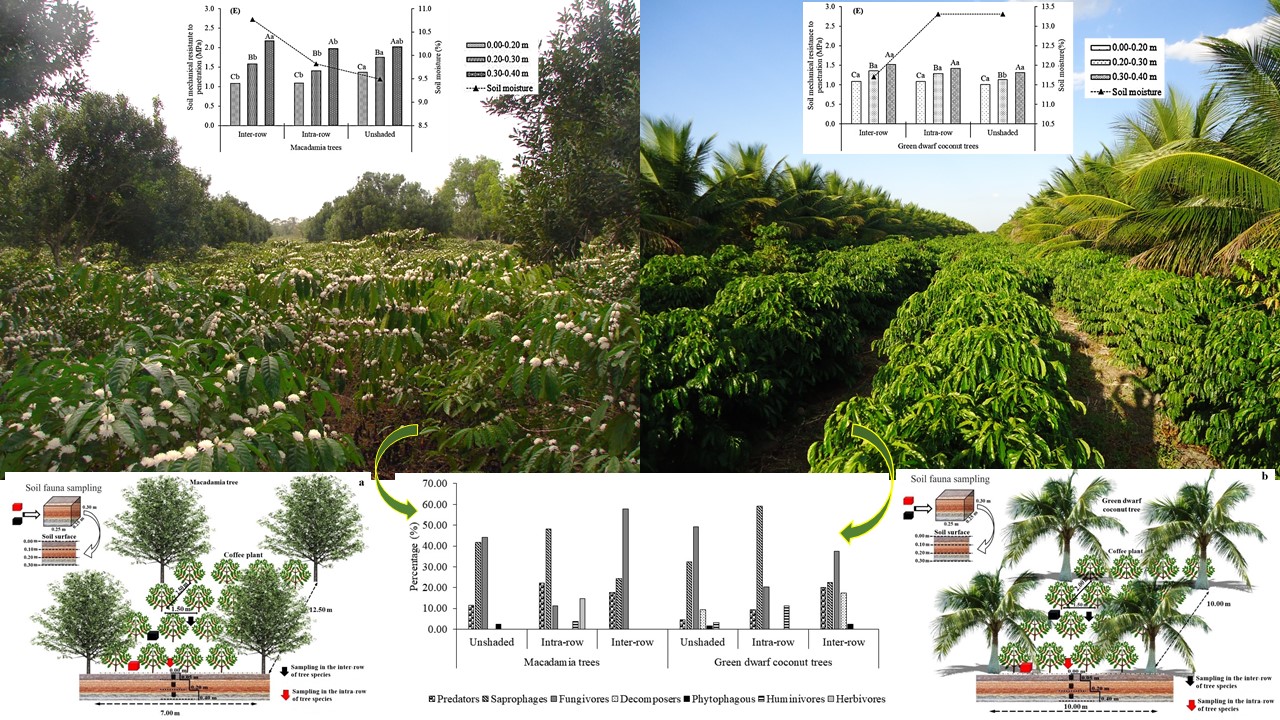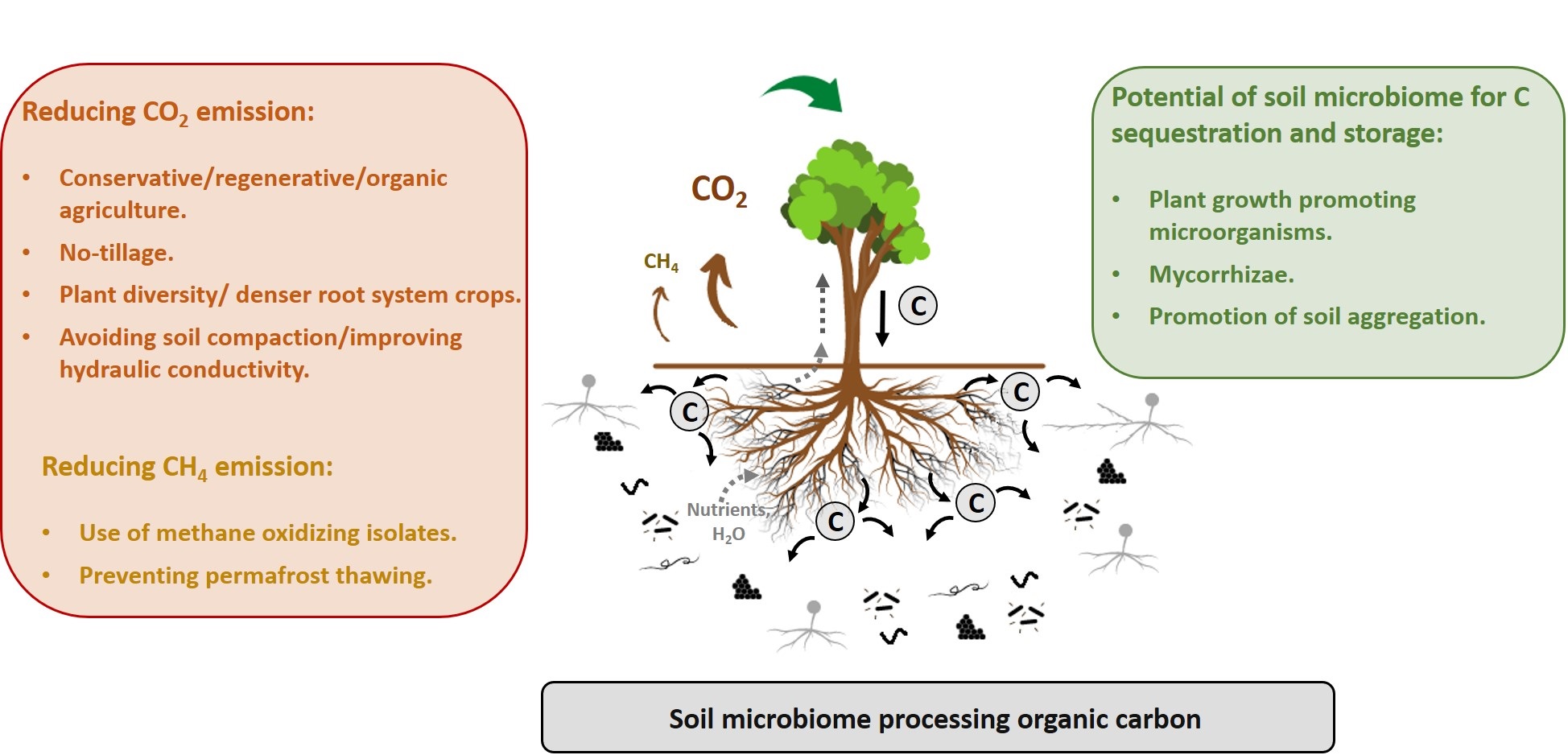Assessment of nutritional status of soybean by the DRIS method in western of Bahia State
08/abr/2024
ABSTRACT Increasing soybean yield in the MATOPIBA region can be attributed to fertility management, which is crucial to achieving maximum agronomic efficiency. Therefore, the proper management begins with the assessment of plant nutrition. This study aimed to evaluate soybean nutritional status in western Bahia using the Diagnosis and Recommendation Integrated System (DRIS). Database comprised 153 samples from commercial fields located in the research area. To carry out the evaluation using the DRIS method, the database contained information on nutritional levels […]
Subsurface evaluation for aquaculture ponds in the Amazon Region
08/abr/2024
ABSTRACT Few Brazilian rural landowners are aware of the technology available to survey the subsoil of terrains earmarked for aquaculture operations. This study evaluated subsoils of Monte Alegre (area 1) and Montenegro 3 (area 2) aquaculture zones in the geographic region of Bragança (Amazon region, northern Brazil), and the adequacy of these areas for aquaculture. Ground Penetrating Radar, electrical conductivity measurements, and sedimentological analyses were applied to evaluate the subsoil of fish farms. Apparent conductivity values recorded by the Electromagnetic […]
Limiting physical properties of Technosols formed by the Fundão dam failure, Minas Gerais, Brazil
27/mar/2024
ABSTRACT Physical properties of the Technosols formed by the tailings deposition may constitute a physical barrier that limits water movement and plant development due to the properties received from those sediments. This study aimed to evaluate the physical quality of the Technosols formed by the deposition of sediments displaced by the Fundão Dam failure, Mariana, Minas Gerais State, Brazil, based on the evaluation of physical properties and Load Bearing Capacity Models (LBCM). For that, three areas under different vegetation types […]
Soil diversity metabarcoding from cacao crop wild relatives in a tropical biodiversity hot spot in Colombia
26/mar/2024
ABSTRACT Theobroma cacao, the source for chocolate fabrication, is a high-value crop that faces challenges such as the impact of climate change, pathogens, and cadmium accumulation. Soil associated with T. cacao has been extensively studied, looking for bio-controllers and microorganisms capable of Cd accumulation. However, there is no information about the microbial structure and interactions occurring in soil associated with cacao wild relatives, which represent a repository for biological diversity and its potential for biotechnological applications. We performed an extracellular […]
Geochemical background and geopedological interactions of selenium in soils from Piauí state, Northeastern Brazil
25/mar/2024
ABSTRACT Although Selenium (Se) plays a role as a micronutrient for humans through vegetable consumption, it is also recognized as toxic when present in excessive quantities. Therefore, quantifying Se contents in soils can prevent diseases influenced by crop Se deficiency or excess. We aimed to measure background contents, establish quality reference values (QRV) for Se in soils from two Brazilian biomes (Cerrado and Caatinga), and assess how geopedological factors affect Se content and spatial variability. Two hundred and eight composite […]
Origin and properties of kaolinites from soils of a toposequence in Southern Brazil
25/mar/2024
ABSTRACT Kaolinite is the main clay mineral in most soils around the world and has been widely used for industrial purposes. This research aimed to study chemical, morphological and crystallographic characteristics of kaolinite, and establish the origin of kaolinitic samples on Serra do Mar and kaolinitic layers on peatlands, located at Southern Brazil. Samples were collected on different geomorphological positions: two samples at Serra do Mar (kaolinitic saprolite – SAP, and kaolinitic layers – KL); and two cores at the […]
Boron nutrition improves peanuts yield and seed quality in a low B sandy soil
25/mar/2024
ABSTRACT Peanuts are mainly grown in sandy soils with low boron content, which may limit the crop yield, especially runner-type cultivars that have high-yields. Boron deficiency causes hollow heart in peanut seeds, reducing yield and seed quality, but the best strategy to supply boron to peanut is still not known. This study aimed to evaluate peanuts nutrition, yield, and seed quality as a function of boron rate, source, and application form. The study was conducted for two years in sandy […]
Influence of soil nutrients on net primary productivity in post-mining forests in the Colombian Pacific
25/mar/2024
ABSTRACT Tropical forests have the highest rates of net primary productivity (NPP) in terrestrial ecosystems and, therefore, may contribute significantly to the mitigation of global climate change. Although NPP is influenced by soil fertility, and recently, in some regions, mining activity in forest ecosystems has intensified. Little is known about how soils determine the restoration of NPP in forests degraded by mining. We evaluated the influence of soil nutrients on wood NPP of post-mining forests in the biogeographic Chocó region […]
Soil physical, chemical and biological properties in Conilon coffee intercropping systems
25/mar/2024
ABSTRACT Shaded coffee systems may offer a series of benefits, however, studies on shaded cultivation of Conilon coffee crops are still scarce in the literature. This study aimed to evaluate the soil physical, chemical, and biological properties of two Conilon coffee intercropping systems from southeastern Brazil. Two commercial coffee crops – one shaded by macadamia trees and the other by green dwarf coconut trees – were evaluated according to three treatments: coffee plants in the inter-row of the tree species; […]
Microbial contribution to the carbon flux in the soil: A literature review
25/mar/2024
ABSTRACT Carbon flows into and out of the soil are important processes that contribute to controlling the global climate. The relationship between soil organisms and the climate is interdependent since the organisms that contribute to carbon and greenhouse gas fluxes are simultaneously affected by climate change and soil management. Temperature, soil moisture, pH, nutrient level, redox potential and organic matter quality are key elements affecting the microorganisms involved in organic carbon flows in the soil. Climate, topography (slope and position […]

